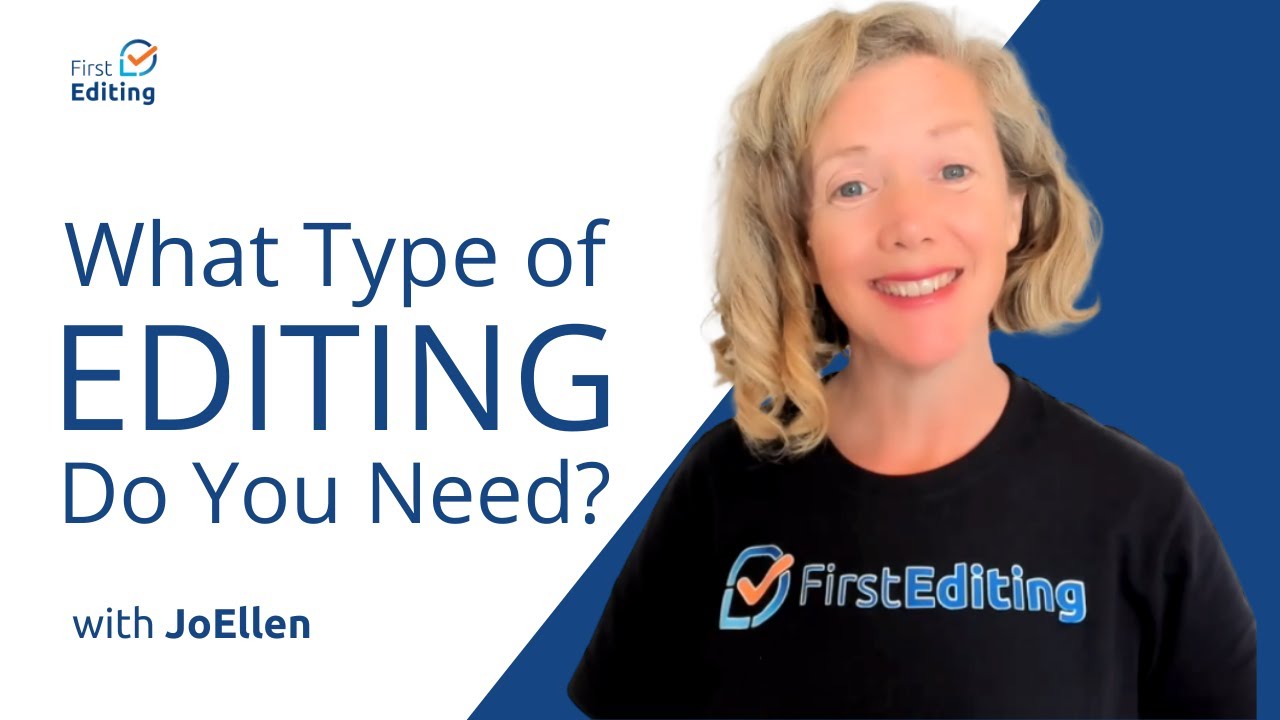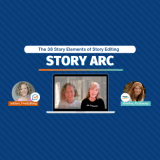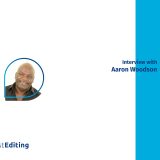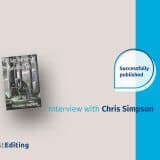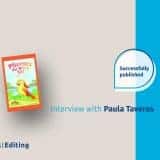
Whether you’re a fiction writer or professional editor, this series is for you!
Taste is like all of the other senses, you want to use it in a sense that’s related to the plot. Use it to show emotion – it can trigger a memory, use it with lovers sharing intimate moments – just that you wanted to bring the scene alive but the main thing is to relate it to the story. We know how taste is very important in describing in our books. This podcast tells you how you can make the ‘sense of taste’ memorable and how we should be using and implementing this type of sense.
Discover how to use the element “Sense of Sound” in a story to improve your writing now.
Get the FULL 38 Story Elements Educational Series. We release a new episode each week!
You can check out and follow all our published educational series.
Transcript with Kristina Stanley
JoEllen: I am here with Kristina Stanley from the Fictionary and we are going through the 38 story elements as we work through self-editing and how it can help you become a better writer and more successful publishing I guess you know self-publishing, whatever you’re going to do there.
Today we’d like to talk to you about taste and how to implement that into our scene so Kristina, lead us through.
Kristina: OK. First off, I have to say, I like your little slip there Kristina.. you almost said First Editing we have been working together for so long you think I work for first editing so you caught it I work at Fictionary but we’re kind of cute, thank you.
JoEllen: It works well, I mean we’re in the same business and we’re doing the same thing and again you know the certification that we’re doing here I think it’s really cool that we’re getting to share all of this and yeah I mean we are two peas in a pod, right?
Kristina: I know, it’s really been an exciting year together and I have to say I’m having a lot of fun going through all of the story elements so today we’re on the last of the senses, not the last of the setting story elements. We’re going to talk about taste, last week we covered sounds and so we’re just moving on to a little bit more variety within the census so another goal is, we wanted to talk about keeping this setting alive with all of the senses but today we want to talk about how can you make the character is tasting better vivid and alive for the reader. I mean but you can’t really make something that is really hungry.
JoEllen: Sure, so how do we make it taste better in our scenes? What’s the secret?
Kristina: Yeah, so first I want to do a little shout out to Sasha Black because I’m going to quote her and she says that a sense in your prose quite literally means creating descriptions that are rich in flavor. You bring your reader into the story and they experienced it with the character and I love that description so I just wanted to you know give me a shout-out there to show what it is from someone else’s words.
JoEllen: Yeah it’s great, I mean Sasha’s done a great new book and I think everyone should check it out she’s a very popular editor and she’s also part of the alliance of independent authors so, as we’re both in that, it’s always good to share the knowledge. So how do we make it better? How do we make it better? How do we make it better?
Kristina: So you know taste is like all of the other senses, you want to use it in a sense that’s related to the plot. So there are lots of scenes I read when I’m editing where the characters are having dinner but the food isn’t really related to the story the plot the goal of that scene it’s just, they’re eating and so it’s quite dull, we all eat dinner every day so it’s not that fascinating. But if you can relate it right back into the stories, so we’ll talk, you know a couple is having an argument and maybe you know the husband is tasting the food and wondering he’s so fed up with his wife and she thinks she made his fabulous meal and it’s just overcooked and I taste this burning sensation marker of bitter sensation or relate it right into the argument of he’s getting more frustrated or go the other way, it’s a new couple, it’s their first date and so everything should be sensual and happy and exciting and so relate the food to that, instead of just you know, they had a steak for dinner and it’s really nice getting when you say that you can’t taste it.
JoEllen: Yeah, especially if you’re vegetarian.
Kristina: Right! I mean you’re going to have that problem with lots of vegetarians and vegans and so you know you need to and that’s a great example because you could have a pull-out mediator having dinner with a vegan and that the tension just from that, is a superb example of how to use taste. They want of course it is with injuries so use in the case with blood in your mouth. Right? Here what do you taste when if you ever actually felt extreme fear what do you taste in your mouth and your mouth goes dry? Are your lips touching your lips? There are all kinds of things you can do in there with the taste and the touch of fear. Right? Or you know something’s mouthwatering. OK, so you’re drooling a little bit and you’re kind of embarrassed about it ’cause you really want to eat whatever is there so you know the taste can be a very joyful thing or it can be a very beautiful thing and so you want to figure out how to relate it to the plot and use it to bring out emotion in your reader.
OK, so that’s what we’re going to do to make it better? What do we need to make sure we don’t do? ’cause there’s always a pitfall, there’s always a problem here. What are the dangers of taste?
Kristina: Yeah so the most common things I see is just, saying a person is eating something boring right, so she, Susan ate a lemon, well that’s nice, I’m here right now but if she’s, you know, first of all, we wonder why she’s eating a lemon but OK let’s just assume it’s the reason in this story for her to eat this lemon. Maybe she’s at a lemon farm, I don’t know where she’s going but maybe. So, what if instead of saying she lemon, we say, the lemon juices squirted in Susan’s mouth and her cheeks sucked inward, her lips pinched outward, she lowered her head hiding helped him be a sore expression. So here now, we take lemon along with Susan and we know she’s self-conscious about her looks so we’ve learned something about her and it can feel her tasting it so maybe now she’s with the lemon farmer and she has a crush on him and so that’s why she’s eating a lemon and now she’s embarrassed ‘because she looks so bad while she now.
JoEllen: Now I want to know about the lemon farmer, so I know it’s not nice.
Kristina: You know, as we talked about a little bit, taste and smell are really linked so if you can, if you can use both senses together, it’s a great way to bring in more than one element and add more depth into your scene.
JoEllen: Great! So we’re going to make sure that we have that. Are there any other pitfalls we need to look out for? Or that you can think of off the top of your head or are we good?
Kristina: No. I think that’s pretty good. I mean yeah it’s like you want to use it to show emotion, you know it can trigger a memory, it can you can use it with lovers sharing intimate moments – just that you wanted to bring the scene alive but the main thing is to relate it to the story. Don’t just do a random taste of something.
JoEllen: So when we do that, we’re going to go through all of our scenes, as we do again again again and we’re looking at taste, sound, smell, all of the different senses there and when we’re doing that, in general, we’re marking off that one that we’ve used them all what else are we going to do today with the special notice to the sense of taste.
Kristina: Yeah, so similar to the other ones you want to keep track of for seeing that you’re using it somewhere throughout your novel. Taste doesn’t have to be in every scene but it’s good if you can incorporate it along with the other five. And you want to look at a variety of tastes. I see a lot of novels where coffee is that thing for smell and taste, such a common thing.. that gets away from it. If you want to mention coffee once in your book, that’s awesome, unless of course the stories about murdering a coffee shop but if it’s just you know something else, then, you want to be careful with them cliche cliches. So, again you’re looking at all of these senses together.
JoEllen: Very good! Alright so we’re going to go in we’re going to review all of our scenes again as normal if you need some automation in that then check out storyteller with Fictionary. And of course, if you need any other help contact one of us professional editors out there and we’ll do our best we ask that you follow like share as we continue on our journey through the 38 story elements. And I do want to remind you we have a free ebook. I need to talk about the free ebook sometime that we’ve written and we encourage you to download it ’cause there’s a lot more you can read and we know everybody on here from loves to read, so thanks for joining us Kristina, we’ll talk again soon!
…





